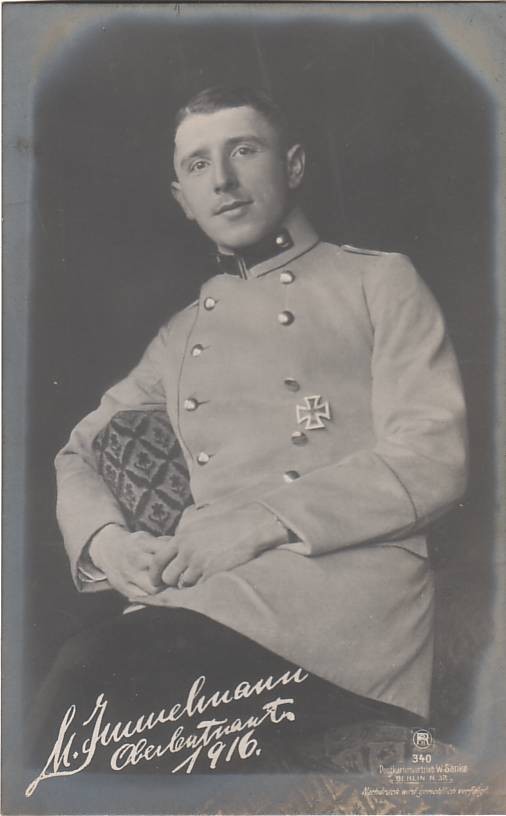Amidst all the great pulp thrills and features in Sky Fighters, they ran a true story feature collected by Ace Williams wherein famous War Aces would tell actual true accounts of thrilling moments in their fighting lives! This time we have Belgian Ace, Lt. Willy Coppens’ most thrilling sky fight!
Willy Coppens was the 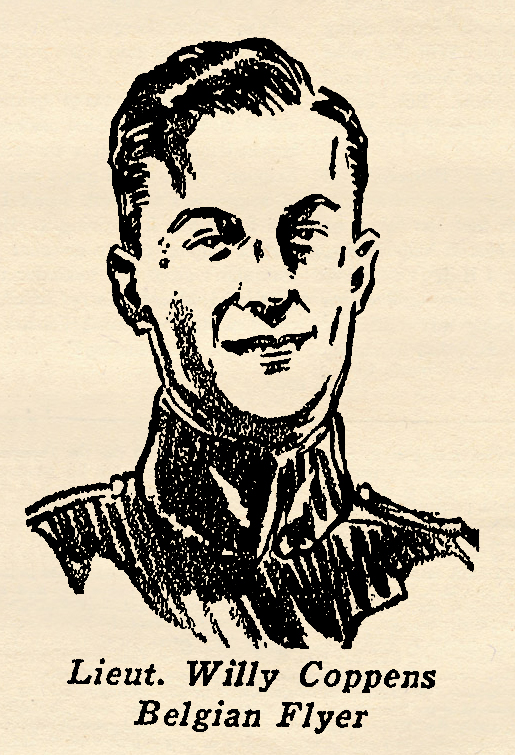 Belgian Ace of Aces. He got his initial training as a soldier and officer in the cavalry division of the army. He transferred later on to the Flying Corps and began immediately to compile the record of victories that gained him top ranking among sky fighters.
Belgian Ace of Aces. He got his initial training as a soldier and officer in the cavalry division of the army. He transferred later on to the Flying Corps and began immediately to compile the record of victories that gained him top ranking among sky fighters.
Because the German armies had overrun all but a narrow strip of his own country, he did all of his flying from foreign bases, usually being stationed in the sectors in Flanders occupied by the British forces. Flying foreign machines from foreign bases, he nevertheless built up a remarkable record of successful combats. When his time on the front was ended, unhappily but gloriously, he was officially credited with 32 victories. The account below is from his diary.
TRUSTING TO FATE
by Lieutenant Willy Coppens • Sky Fighters, November 1934
FIGHTING great odds is not an uncommon thing. But today I felt for a time that, at last, I had run into a situation where the odds were too great for me.
I was cruising alone over La Chapelle on solo patrol at a very low altitude because of the low hanging clouds.
A full flight of Fokkers, six in all, came down at me like a lightning bolt. I was bottled up before I fully recovered from my first surprise.
I decided to open the attack myself and fight it out if I could. I dived for speed with throttle wide open, then banked swiftly, aiming for the Fokker below. I pressed both trigger trips, sent out a vicious double burst the instant I lined him. But he had pulled back and swept into a swirling vertical bank at the same instant. My burst passed harmlessly beneath the Fokker’s trucks. And instantly bullets began to clatter and zing through my instrument board. I glanced back up, saw one Fokker bearing down on me not more than 10 meters off my tail.
I jerked into a desperate loop, whined out with my attacker just ahead of me. Again I pressed my triggers. This time my bursts literally tore the Fokker to pieces. The vertical rudder shattered, sheared away. Only a quick maneuver on my part saved me from being hit by it. Next the whole tail seemed to disintegrate, and the following moment the Fokker nosed abruptly earthward. First blood was mine. It gave me confidence. But too soon!
When I looked up again, another Fokker was charging at me head on, both Spandaus yammering. The smoke streams parted my wings. Then a second stream of tracer rattled in from the rear. I was getting it fore and aft. I decided to plunge straight ahead.
I did so, gripping both trigger trips and sending out twin streams of tracer as I roared in toward the first Hun. Bullets from the following Hun still rattled around me. But I knew that if I held my ground, the oncoming Hun would have to swerve to escape being rammed in midair. But my senses would not stand the sight. I could not look at the Fokker charging at me, so I closed my eyes and decided to keep them closed until I counted off ten seconds. I kept my guns firing all the time, for the Fokker was centered directly in my sights.
I expected in be killed, and trusted only to fate. The seconds passed interminably in the darkness I had willed. Still I lived! At the count of ten I opened my eyes. The Hun who had been flying at me from in front was spiralling down toward the ground, his plane a mass of red flame and black smoke trails.
God had been with me I knew then. I had got that Hun with my eyes closed. My bullets had exploded his gas tank. Charged now with a renewed vigor and desire to live, I wheeled and attacked my pursuer. But the three remaining Fokker pilots did not stay to fight any longer. They ran for home. I would have chased them, but when I looked at my ammo supply, I saw that I had none, so I went home myself.
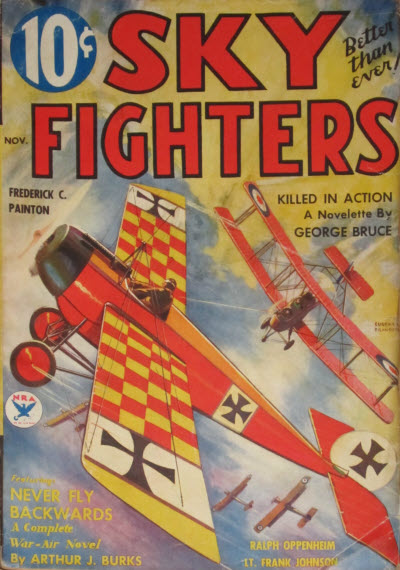 great story from the pen of Ralph Oppenheim. Best known in these parts for The Three Mosquitoes, he wrote many other stories of the air and several ripping detective yarns. Here Mr. Oppenheim gives us a story of Solo Williams—a man who was used to working alone. Though he was one of the most sociable fellows in the 25th Pursuit Squadron, his official drome, his sociability vanished the moment his wings took him into the sky. In the sky he could not be hampered by formation flying or teamwork. He had to smash through in his own, individual way—a reckless, hell-bending way which no others could follow. But tonight, for the first time in his reckless career, Solo Williams had to work with a partner—a man he had never met and never would actually meet in person!
great story from the pen of Ralph Oppenheim. Best known in these parts for The Three Mosquitoes, he wrote many other stories of the air and several ripping detective yarns. Here Mr. Oppenheim gives us a story of Solo Williams—a man who was used to working alone. Though he was one of the most sociable fellows in the 25th Pursuit Squadron, his official drome, his sociability vanished the moment his wings took him into the sky. In the sky he could not be hampered by formation flying or teamwork. He had to smash through in his own, individual way—a reckless, hell-bending way which no others could follow. But tonight, for the first time in his reckless career, Solo Williams had to work with a partner—a man he had never met and never would actually meet in person! 






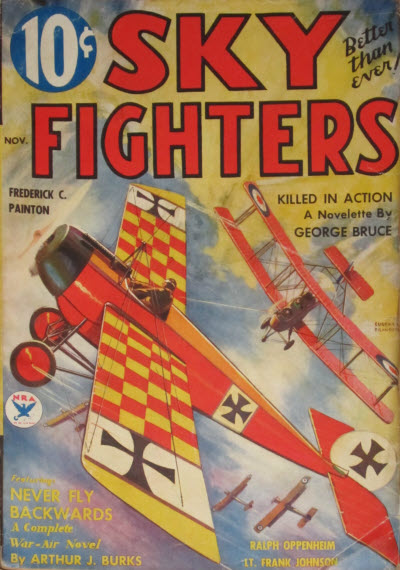 Silent Orth had made an enviable record, in the face of one of the worst beginnings—a beginning which had been so filled with boasting that his wingmates hadn’t been able to stand it. But Orth hadn’t thought of all his talk as boasting, because he had invariably made good on it. However, someone had brought home to him the fact that brave, efficient men were usually modest and really silent, and he had shut his mouth like a trap from that moment on.
Silent Orth had made an enviable record, in the face of one of the worst beginnings—a beginning which had been so filled with boasting that his wingmates hadn’t been able to stand it. But Orth hadn’t thought of all his talk as boasting, because he had invariably made good on it. However, someone had brought home to him the fact that brave, efficient men were usually modest and really silent, and he had shut his mouth like a trap from that moment on.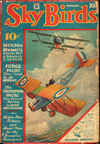
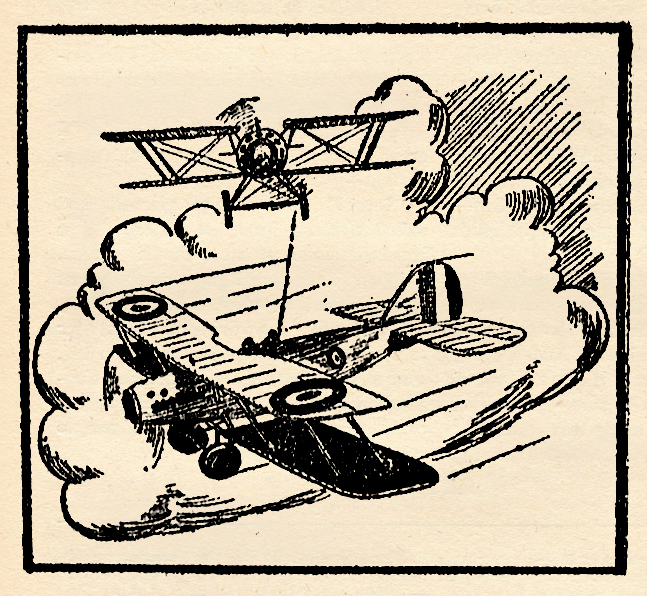
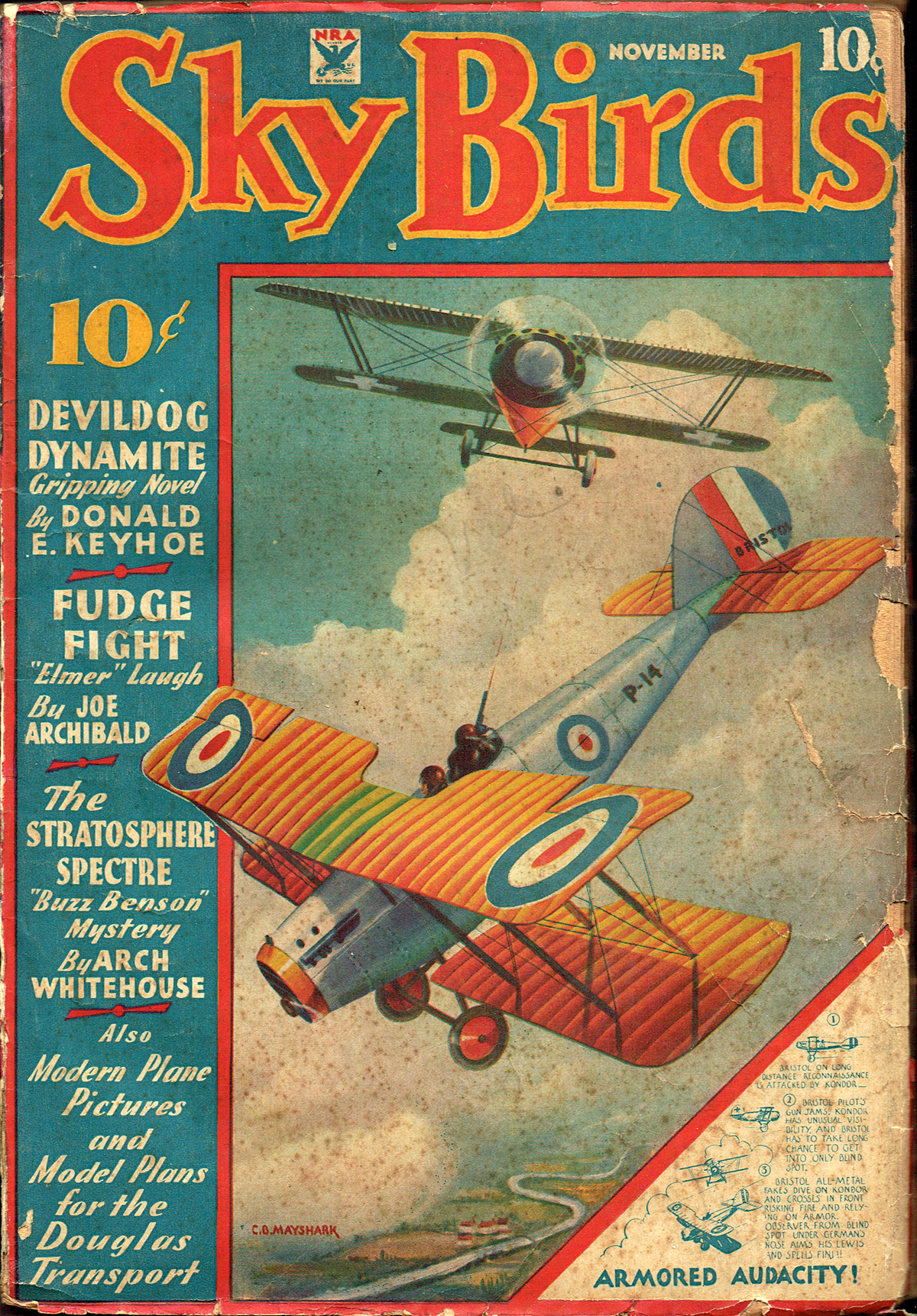
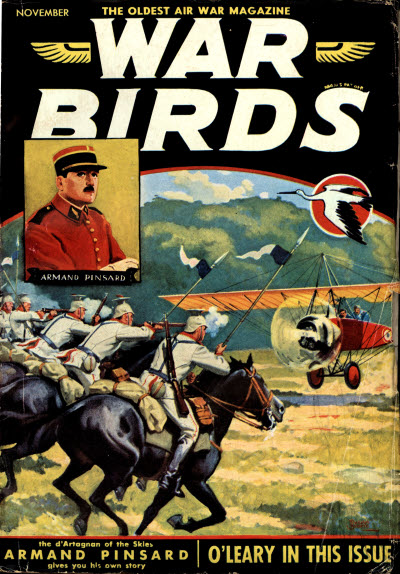 a story from the pen of C.M. Miller! Miller is known to Age of Aces readers as the author behind
a story from the pen of C.M. Miller! Miller is known to Age of Aces readers as the author behind  a story from the pen of a prolific pulp author and venerated newspaper man—Frederick C. Painton. In “Flaming Death” Painton gives us a pulse-stirring war-air novelette—”B” Flight’s mascot, Babe Norwood, the squadron’s youngest flyer, is shot down with incendiary bullets! All of the fighting nations had agreed to ban their use—so rigidly were they banned that any flyer caught using them was instantly stood against the wall with barely the mockery of a drum-head court-martial. The squadron uses all avenues of the services to hunt down the culprit and bring him to justice! From the November 1934 Sky Fighters it’s Frederick C. Painton’s “Flaming Death!”
a story from the pen of a prolific pulp author and venerated newspaper man—Frederick C. Painton. In “Flaming Death” Painton gives us a pulse-stirring war-air novelette—”B” Flight’s mascot, Babe Norwood, the squadron’s youngest flyer, is shot down with incendiary bullets! All of the fighting nations had agreed to ban their use—so rigidly were they banned that any flyer caught using them was instantly stood against the wall with barely the mockery of a drum-head court-martial. The squadron uses all avenues of the services to hunt down the culprit and bring him to justice! From the November 1934 Sky Fighters it’s Frederick C. Painton’s “Flaming Death!” Belgian Ace of Aces. He got his initial training as a soldier and officer in the cavalry division of the army. He transferred later on to the Flying Corps and began immediately to compile the record of victories that gained him top ranking among sky fighters.
Belgian Ace of Aces. He got his initial training as a soldier and officer in the cavalry division of the army. He transferred later on to the Flying Corps and began immediately to compile the record of victories that gained him top ranking among sky fighters.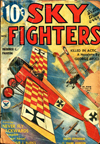
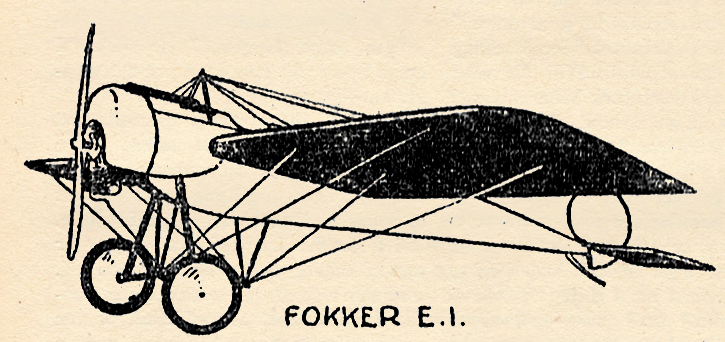
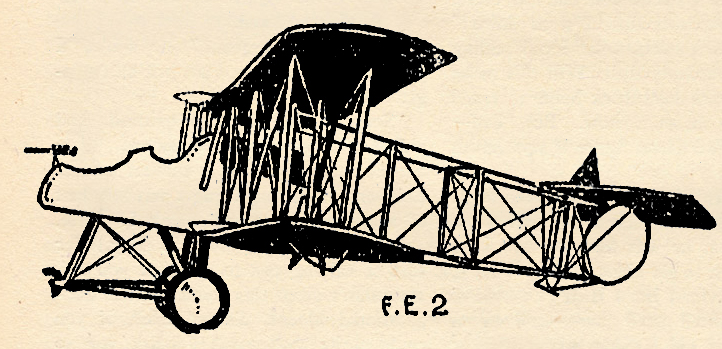

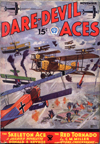
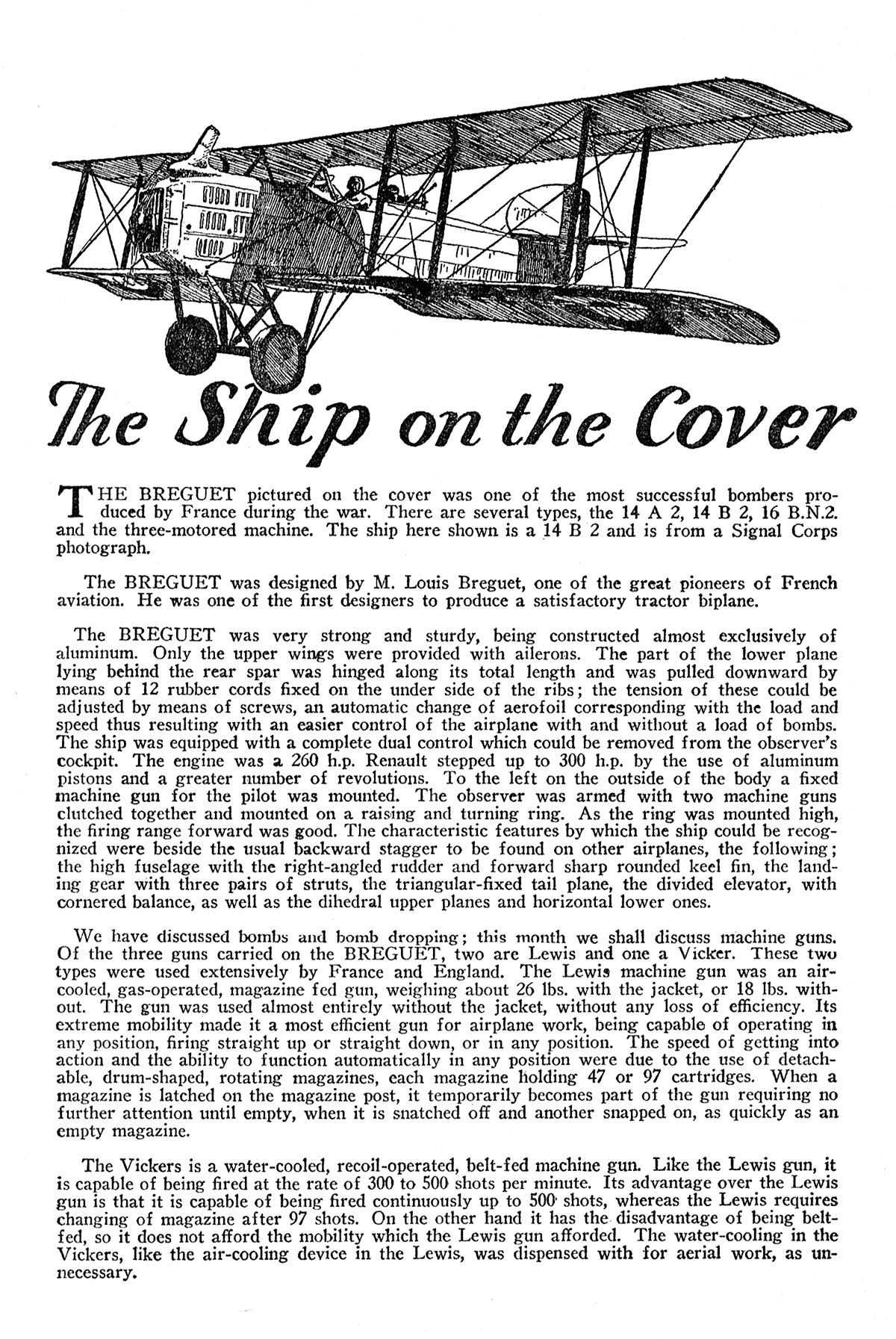
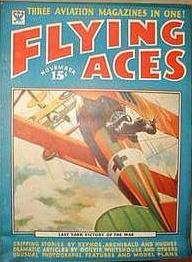 You heard right! That marvel from Boonetown, Iowa is back! And if things aren’t rough enough for Major Rufus Garritty with Pinkham about—imagine the horror if there were two Pinkhams! Say it ain’t so!
You heard right! That marvel from Boonetown, Iowa is back! And if things aren’t rough enough for Major Rufus Garritty with Pinkham about—imagine the horror if there were two Pinkhams! Say it ain’t so!